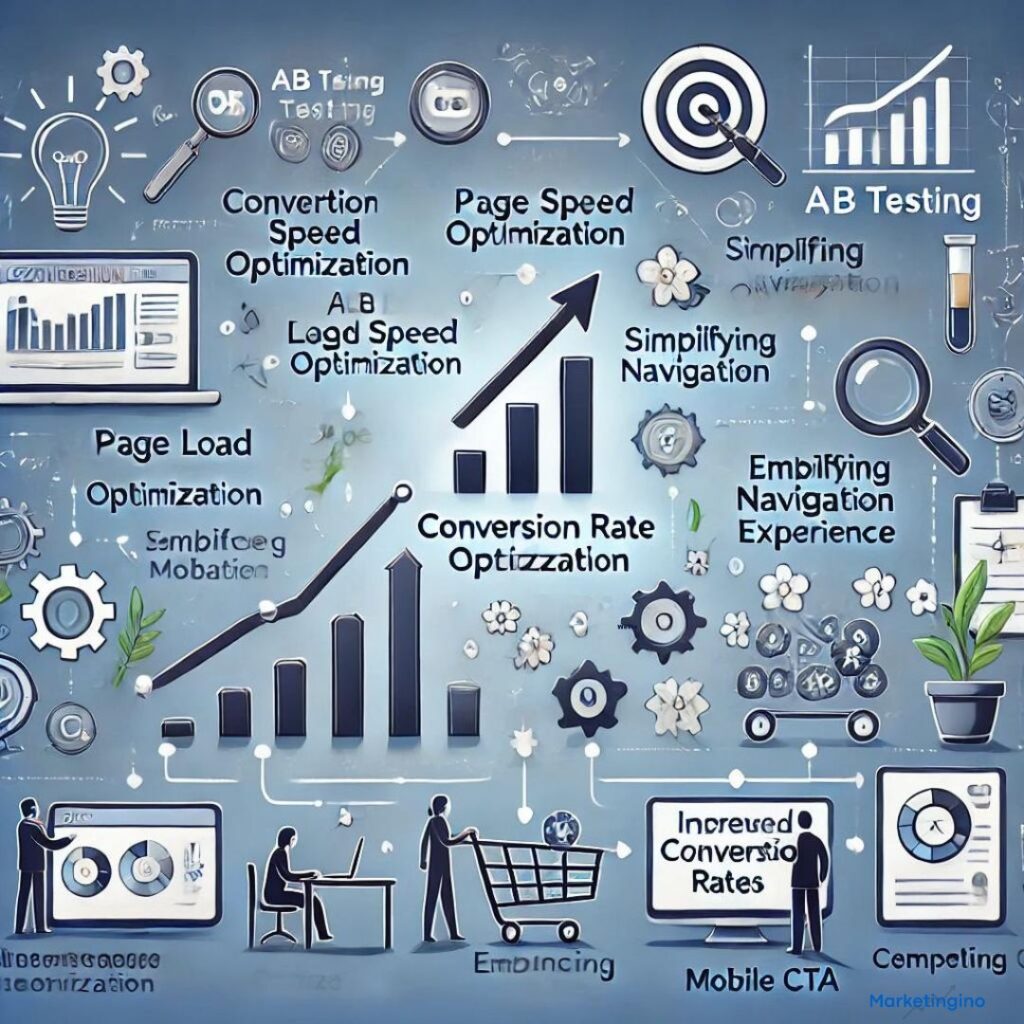In the digital landscape, businesses constantly strive to enhance the effectiveness of their online presence. One of the most critical aspects of this endeavor is Conversion Rate Optimization (CRO). CRO involves the process of increasing the percentage of users or website visitors who complete a desired action, such as making a purchase, filling out a form, or subscribing to a newsletter. This article explores the concept of conversion rate optimization, its significance, methods, and best practices for achieving higher conversion rates.
What Is Conversion Rate Optimization?
Conversion Rate Optimization is a systematic approach aimed at improving the performance of a website or online platform by increasing the proportion of visitors who take a specific desired action. The goal of CRO is to enhance the user experience, making it easier and more appealing for visitors to convert. This process involves analyzing user behavior, identifying barriers to conversion, and implementing changes to overcome these obstacles.
Importance of Conversion Rate Optimization
1. Increased Revenue
CRO directly impacts a business’s bottom line by converting more visitors into customers. Even a small increase in conversion rate can lead to a significant boost in revenue, especially for high-traffic websites.
2. Better ROI
Optimizing conversion rates improves the return on investment (ROI) for marketing efforts. By converting a higher percentage of existing traffic, businesses can achieve better results without increasing marketing spend.
3. Enhanced User Experience
A key aspect of CRO is improving the user experience. By identifying and addressing pain points in the user journey, businesses can create a smoother and more enjoyable experience, leading to higher satisfaction and loyalty.
4. Data-Driven Decisions
CRO relies on data and analytics to drive decisions. This approach ensures that changes are based on empirical evidence rather than assumptions, leading to more effective and measurable improvements.
Methods of Conversion Rate Optimization
1. A/B Testing
A/B testing involves comparing two versions of a webpage or element to determine which one performs better. By testing different headlines, images, CTAs, and layouts, businesses can identify the most effective combinations and implement changes that drive higher conversions.
2. User Behavior Analysis
Understanding how users interact with a website is crucial for CRO. Tools like heatmaps, session recordings, and user surveys provide insights into user behavior, highlighting areas where users may encounter difficulties or drop off.
3. Improving Page Load Speed
Page load speed significantly affects user experience and conversion rates. Faster-loading pages provide a better user experience and reduce the likelihood of visitors abandoning the site. Optimizing images, leveraging browser caching, and minimizing HTTP requests are some ways to improve page load speed.
4. Simplifying Navigation
A clear and intuitive navigation structure helps users find what they are looking for quickly and easily. Simplifying navigation by reducing the number of menu items, using descriptive labels, and ensuring a logical flow can enhance user experience and increase conversions.
5. Enhancing Mobile Experience
With the increasing use of mobile devices, optimizing for mobile users is essential. Ensure that your website is responsive, with easy-to-click buttons, readable text, and a smooth mobile checkout process to cater to mobile visitors effectively.
6. Crafting Compelling CTAs
Calls to action (CTAs) play a critical role in driving conversions. Use action-oriented language, create a sense of urgency, and make CTAs stand out visually. Test different placements, colors, and wording to find the most effective combination.
Best Practices for Conversion Rate Optimization
1. Set Clear Goals
Define clear and measurable goals for your CRO efforts. Whether it’s increasing sales, generating leads, or boosting signups, having specific goals helps in creating focused and effective strategies.
2. Use Data and Analytics
Leverage data and analytics to inform your CRO strategies. Regularly monitor key metrics such as bounce rates, conversion rates, and user engagement to identify areas for improvement and measure the impact of changes.
3. Continuously Test and Iterate
CRO is an ongoing process. Continuously test different elements, analyze results, and iterate based on findings. Regular testing and refinement help in keeping the user experience optimized and conversion rates high.
4. Focus on User Experience
Prioritize user experience in all CRO efforts. Ensure that your website is user-friendly, visually appealing, and provides a seamless journey from entry to conversion. Address any barriers or friction points that may hinder conversions.
5. Personalize User Interactions
Personalization can significantly enhance conversion rates. Use data to deliver personalized content, recommendations, and offers that resonate with individual users. Personalization makes users feel valued and increases the likelihood of conversion.
Conclusion
Conversion Rate Optimization is a vital practice for businesses aiming to maximize the effectiveness of their online presence. By systematically improving the user experience and addressing barriers to conversion, businesses can increase the percentage of visitors who complete desired actions. Implementing CRO strategies not only drives higher conversions and revenue but also enhances user satisfaction and loyalty. Embrace the principles of CRO to achieve sustained business success in the digital age.




